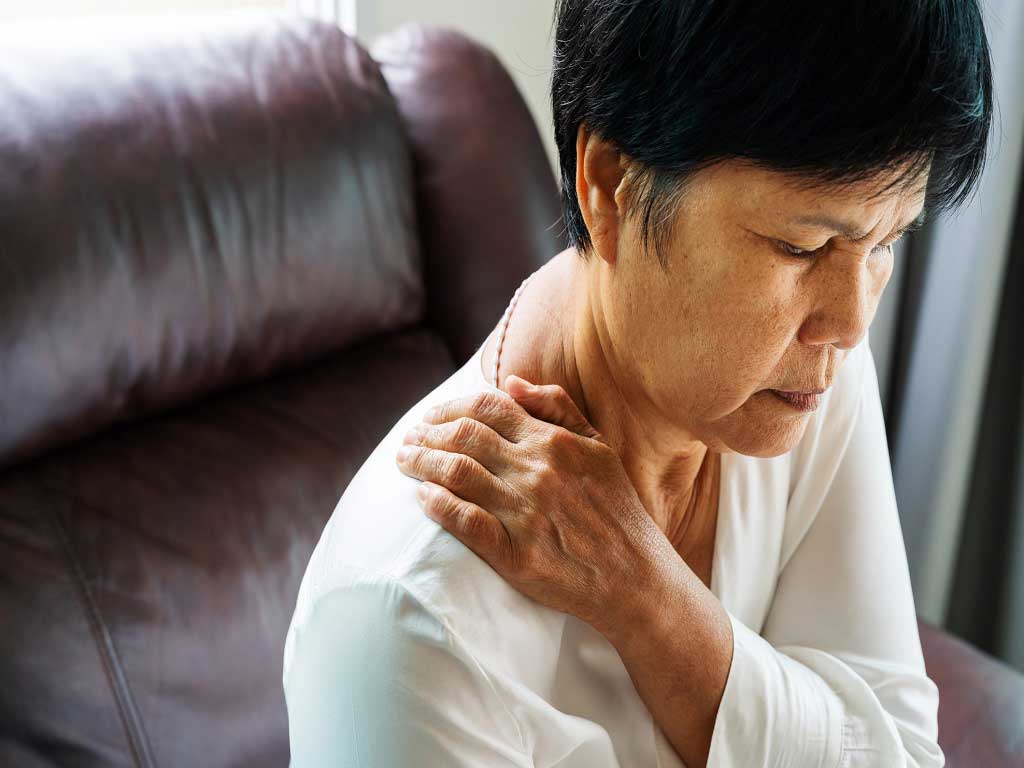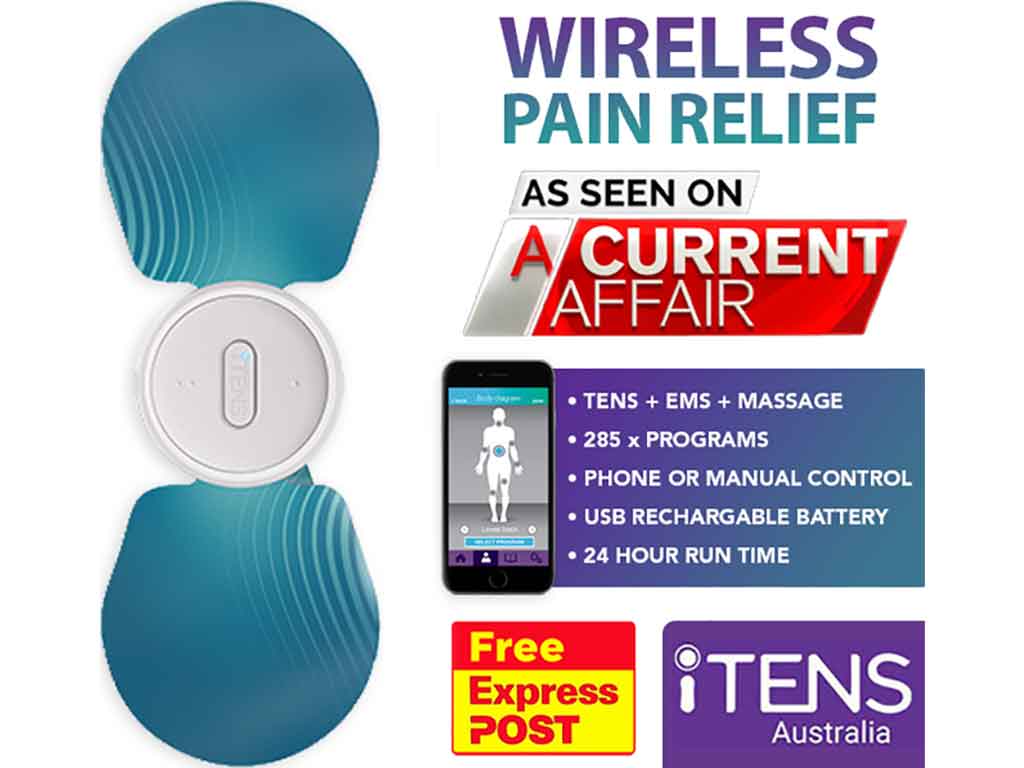
Myofascial pain syndrome is a condition characterised by chronic pain in the muscles and surrounding connective tissue. Using a Transcutaneous Electrical Nerve Stimulation or TENS unit for myofascial release involves sending electrical impulses through the skin to block pain signals and trigger the release of endorphins. Additionally, it offers several benefits to users, including non-invasive, drug-free, and customisable settings. Nevertheless, it is important to consult a health professional before starting electrotherapy to ensure it is safe and appropriate.
Dealing with myofascial pain syndrome involves a multi-faceted approach, including gentle stretching exercises, regular physical therapy sessions, and medication. However, these methods may not provide enough relief for some people. Alternatively, they may incorporate TENS therapy into their treatment plan. Using this therapy involves electrode placement and adjusting the intensity and frequency of electrical stimulation. This article will cover myofascial pain syndrome, the functionality of a TENS device in treating it, and the potential benefits it offers.
Understanding the Condition Before Using a TENS Unit for Myofascial Release
Myofascial pain syndrome is a medical condition where pressure on sensitive points in the muscles, called trigger points, causes pain and discomfort. These trigger points can develop from overuse, injury, or stress, leading to tightness and tenderness in the affected muscles. Hence, people with myofascial pain syndrome may experience muscle stiffness, aching, and limited range of motion in the affected area.
Using a TENS unit for myofascial release involves applying low-voltage electrical currents through electrode pads placed on the skin. These electrical impulses stimulate nerves in the area, which can help reduce pain and promote muscle relaxation. Moreover, there are two types of TENS devices: wired and wireless. Standard (or wired) devices require lead cables to connect the electrodes to the unit. Meanwhile, wireless TENS units integrate Bluetooth technology.
Regular use of a TENS device as part of a comprehensive treatment plan may provide relief from myofascial pain syndrome symptoms. However, it is important to consult with a healthcare professional for guidance on proper usage and to ensure safety.
Causes and Symptoms of Myofascial Pain Syndrome
Causes:
- Overuse of muscles during repetitive motions or activities.
- Muscle injuries due to falls or sports-related trauma.
- Prolonged poor posture, such as slouching or hunching over.
- Structural imbalances in the body, like leg length discrepancies or spinal misalignment.
- Medical conditions such as fibromyalgia or arthritis can contribute to muscle pain and sensitivity.
Symptoms:
- Persistent muscular pain and tenderness in specific areas are known as trigger points.
- Muscle stiffness and tightness, especially after periods of inactivity or prolonged sitting.
- Reduced range of motion in affected muscles, making movement difficult or painful.
- Fatigue and weakness in the muscles due to ongoing tension and discomfort.

How a TENS Unit for Myofascial Release Works
A TENS unit for myofascial release works by using electrical stimulation. The electrical pulses travel to the sensory nerves and activate mechanisms for effective treatment of aches. TENS machines have adjustable settings that allow users to adjust the levels according to their comfort and health issues. Some devices offer preset modes, which streamline the process by providing pre-programmed settings tailored to specific conditions.
People can use high-frequency TENS (50-120 Hz) for the immediate pain reduction. It triggers the spinal nerve fibres to block pain signals from reaching the brain. This process is also known as the pain gate mechanism. Moreover, this frequency stimulation can induce vasodilation, improving blood circulation to the target area. It also has a massage-like effect that soothes sore muscles and decreases movement pain.
On the other hand, low-frequency TENS (2-10 Hz) can prompt the release of endorphins. These hormones are natural painkillers that provide lasting and effective analgesia. They can also help reduce inflammation and stress. By improving moods, endorphins can increase the quality of life.
Mechanisms of Action
TENS works through several mechanisms to help alleviate pain. One way it does this is by tapping into the Gate Control Theory of Pain. According to this theory, when the body experiences pain, a gate in the spinal cord controls the flow of pain signals to the brain. TENS can essentially close the gate, providing pain relief.
Another pain mechanism for TENS involves triggering the release of endorphins. When TENS stimulates nerves, these endorphins bind to opioid receptors in the brain, reducing the intensity of pain signals. Additionally, TENS may affect the central nervous system, altering how the brain perceives pain.

Benefits of Using a TENS Unit for Myofascial Release
A TENS unit for myofascial release offers numerous benefits, making it a popular option for pain management. Firstly, it provides a non-invasive and drug-free method of pain relief. It does not require any needles or incisions, providing a safe and comfortable experience for individuals. Its non-medicated approach minimises the risks of dependency and side effects like nausea and digestive issues.
Secondly, TENS devices offer a customisable treatment. They have adjustable settings to control the stimulation based on individual comfort levels. This versatility makes TENS therapy suitable for a wide range of health conditions. Also, many digital TENS machines offer preset modes for convenient use. These programs have set parameters for a specific body part or ailment.
Thirdly, TENS is versatile. It can help relieve various acute or chronic pain conditions aside from myofascial pain syndrome. These include postoperative pain, musculoskeletal pain, chronic neck pain, neuropathic pain, period pain, and even labour pain. Lastly, TENS therapy offers a cost-effective and long-term solution for pain control.
Is It Safe and Effective?
TENS therapy offers a safe and effective solution for managing pain. However, it is crucial to adhere to certain guidelines. Consulting a healthcare professional before starting TENS treatment ensures its suitability for individual needs. For those with cardiac rhythm devices, it is especially important to avoid TENS therapy as it could potentially interfere with these devices, leading to malfunctions.
Additionally, proper electrode placement is essential to prevent discomfort and adverse effects. Avoiding sensitive areas like the spinal cord, throat, and head ensures safe and effective treatment. Moreover, people should use TENS machines responsibly by following prescribed treatment durations and recommended settings.
Conclusion
In conclusion, using a TENS unit for myofascial release can effectively alleviate pain and discomfort associated with myofascial pain syndrome. By applying low-voltage electrical currents to stimulate nerves in the affected area, TENS units help reduce muscle stiffness and promote relaxation. High-frequency stimulation blocks pain signals. Meanwhile, low-frequency stimulation prompts the release of natural painkillers, providing lasting relief. With adjustable settings and preset modes, these devices offer personalised treatment options.
Furthermore, TENS therapy offers several benefits. It provides a non-invasive and drug-free method of pain relief, making it safe and comfortable. Its customisable settings cater to individual comfort levels, ensuring versatility for various health conditions beyond myofascial pain. Moreover, it is cost-effective and provides long-term pain control. However, it is essential to consult a healthcare professional before use and follow proper guidelines for electrode placement and treatment duration. People interested in wireless TENS devices may check iTENS Australia.




















